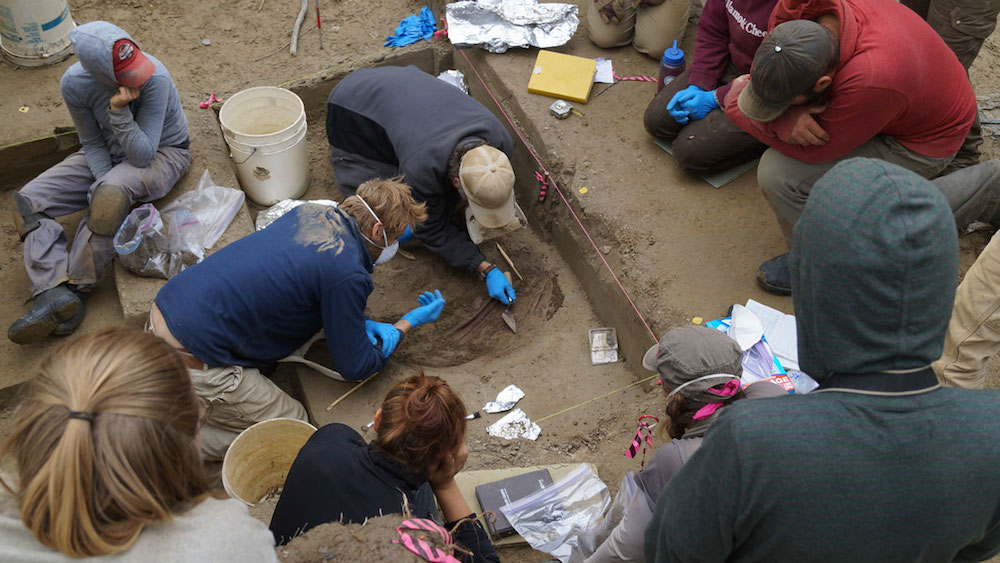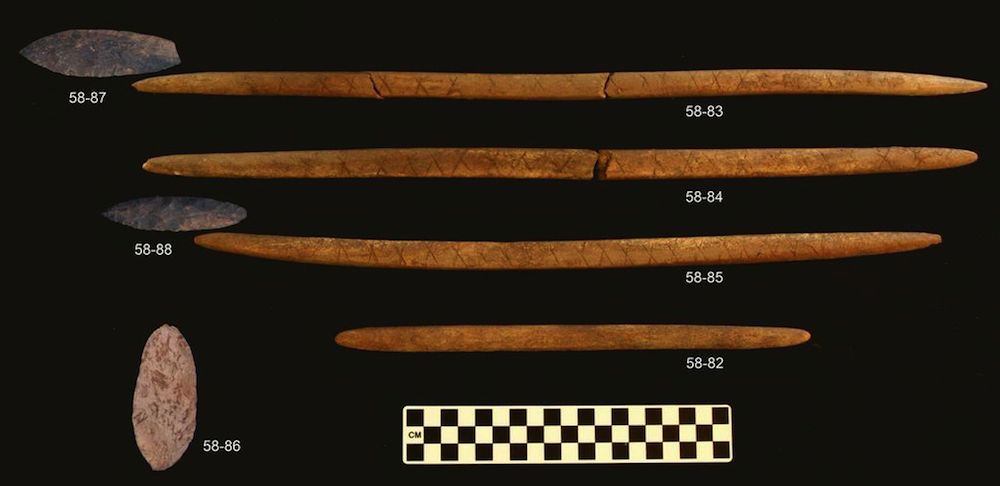Ice Age Death Rituals Revealed at Infant Burial Site

The fragile skeletons of two infants, discovered beneath the cremated remains of a 3-year-old child, may help researchers understand death rituals practiced during the last ice age in North America, a new study finds.
The children's remains, which date back to 11,500 years ago, were found in a hearth at Upward Sun River, an archaeological site in central Alaska. Researchers uncovered the cremated skeleton of the 3-year-old child in 2010, and returned to the site in 2013, digging deeper to see what else lay within the prehistoric hearth.
About 15.7 inches (40 centimeters) beneath the first cremated child, they found the double burial. [See a time-lapse video of the Alaskan excavation]
"When we got to the bottom [of the hearth], we identified a carpet of red ochre. That clearly set it out," said Ben Potter, an associate professor and chairman of anthropology at the University of Alaska, Fairbanks. "Then, we encountered the human remains and the grave goods at the very bottom. That was very unexpected and amazing."
The team immediately stopped the excavation, and contacted local and regional native groups and state officials, asking for permission to study the remains of the tiny infants.
"They were treating the human remains with respect, and that's really what you need to do," said Roy Carlson, professor emeritus of archaeology at Simon Fraser University in British Columbia, Canada, who was not involved in the study.
The skeletal remains of the two infants, found with their legs bent toward their chests, are a "remarkable and unusual" find, Carlson said. An analysis of the infants' teeth and bones suggests that one was likely a late-term fetus, and the other was about five weeks old, making them the youngest known individuals from the late Pleistocene epoch to receive burial treatment, the researchers wrote in the study.
Get the world’s most fascinating discoveries delivered straight to your inbox.
The grave also holds a prehistoric hunting tool kit. The team found several stone-made bifaces, dart or spear points, and antler foreshafts decorated with geometric incisions next to the infants. Other ice-age findings have suggested that early hunters may have used stone weapons and foreshafts together, but the new finding is the first to provide concrete evidence that they were used in tandem.
"They were placed in the position that we could infer that they were attached," Potter told Live Science. "Imagine if you are a hunter on the landscape. You wouldn't want to carry a large amount of heavy spears or dart shafts with you. You would just have one or two [foreshafts], but you would have many points in case you break one."
The burial placement of the hunting tools suggests that terrestrial hunting, as opposed to fishing rods or other hunting weapons, were of utmost importance to the ice-age people, Potter said.
Twin clues
The relationship between the two infants, likely girls, remains a mystery. It's possible that the girls are twins, Potter said, but a DNA test would be needed to verify the idea.
It's unlikely that a highly mobile foraging society would have two deaths from different mothers at exactly the same time, he said. If they were twins, it might explain why the girls are buried together, he said.
"One could have died in utero, and then that enhances the potential for an early death for the surviving child," Potter said. [8 Grisly Archaeological Discoveries]
The soil at the burial site isn't that disturbed, so the infants may have been buried at the same time, the researchers said. Or, they could have died within a season or two of each other, which could indicate that they are not twins, Potter said.
Either way, researchers are looking forward to the results of the genetic tests. And regardless of whether the infants were twins, the people who buried the children clearly gave them deferential treatment.
"You have grave goods, ochre, burial in a highly flexed orientation, and the grave goods are quite amazing," Potter said. "For the upper [3-year-old] child, you do not have grave goods, you do not have ochre and the child is cremated. So this is quite interesting."
The team also found bones of ground squirrels and salmonids, which are fish related to present-day salmon, in the hearth. These animal bones suggest that the infants' burials took place during the summer, when these animals are typically in the region, Potter said.
Carlson said the findings are the result of "top-notch research."
"It brings forward information about Alaska 11,500 years ago from a time which we knew very little about and we know a lot more about now," he said.
The study was published online today (Nov. 10) in the journal the Proceedings of the National Academy of Sciences.
Follow Laura Geggel on Twitter @LauraGeggel and Google+. Follow Live Science @livescience, Facebook & Google+. Original article on Live Science.

Laura is the managing editor at Live Science. She also runs the archaeology section and the Life's Little Mysteries series. Her work has appeared in The New York Times, Scholastic, Popular Science and Spectrum, a site on autism research. She has won multiple awards from the Society of Professional Journalists and the Washington Newspaper Publishers Association for her reporting at a weekly newspaper near Seattle. Laura holds a bachelor's degree in English literature and psychology from Washington University in St. Louis and a master's degree in science writing from NYU.



